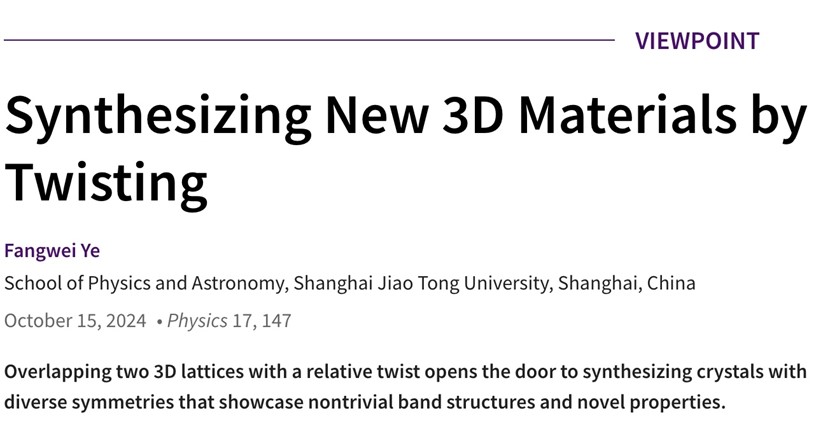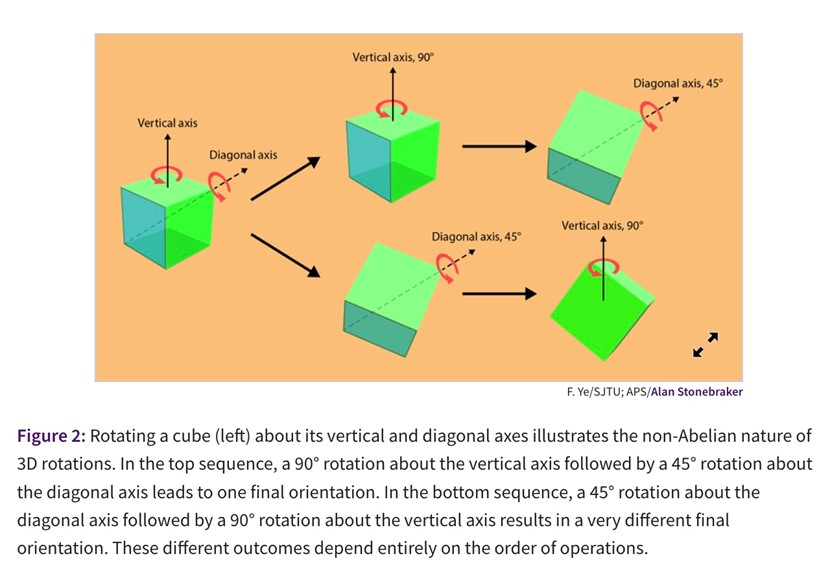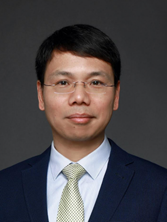
Today, Professor Fangwei Ye was invited to publish a commentary article (Viewpoint) titled “Synthesizing New 3D Materials by Twisting” on the official website of the American Physical Society, Physics. The commentary focuses on a recent study on moiré lattices published in Physical Review Letters. Viewpoint are expert-written essays about papers that are considered exciting for a subfield of physics.


When a periodic pattern is overlaid with another similar pattern through displacement, rotation, or slight scaling, a large-scale interference pattern, known as a "moiré pattern", emerges. This common phenomenon has garnered significant attention in the physics community over the past two decades. The most famous example is twisted bilayer graphene: when two layers of graphene are stacked with a small relative angle, not only does a moiré pattern form spatially, but the material exhibits properties entirely different from those of monolayer graphene, resulting in a "1 plus 1 far greater than 2" effect. Moiré bilayer materials, represented by twisted bilayer graphene, have been widely studied in condensed matter physics, with applications expanding into optics, acoustics, mechanics, and other fields.
However, research on moiré physics has mainly been confined to two-dimensional systems, due to limitations in material fabrication. In a study published today in Physical Review Letters [Physical Review Letters 133, 163401 (2024)], researchers from Tongji University, Zhejiang Normal University, Shanxi University, and Tsinghua University in China proposed a concrete approach to realizing three-dimensional moiré lattices using cold atoms in optical lattices. Unlike two-dimensional moiré lattices, three-dimensional moiré lattices possess rotational non-Abelian characteristics, meaning that the order in which the lattices are rotated significantly affects the final structure. The researchers found that this can produce richer lattice arrangements from simple cubic lattices, leading to a wider variety of material properties.
In his commentary, Professor Fangwei Ye suggests that the overlapping of two three-dimensional lattices through relative rotation opens new doors for synthesizing crystals with diverse symmetries and novel properties, such as exhibiting non-trivial band structures. Additionally, it provides a new platform for exploring higher-dimensional non-Abelian physics. The commentary also outlines potential future directions for research in moiré physics.
The Viewpoint can be found here: https://physics.aps.org/articles/v17/147.
About the Author

Fangwei Ye studied optics and obtained his PhD from the University of Science and Technology of China. Following stays at the Institute of Photonic Sciences, Spain, and Hong Kong Baptist University where he conducted research on nonlinear waves, he joined Shanghai Jiao Tong University (SJTU). Currently, he holds the position of a physics professor at SJTU. His research focuses on micro- and nanophotonics, nonlinear optics, and nonlinear physics, as well as their applications in optical neural networks.




